There are many different types of research reports on BigTime on the Internet. Gold players focus on output, merchants, and prices, while coin speculators pay more attention to trends, consumption, and popularity. What people prefer to see is which game can make money, is more popular, and has more benefits. This research report is more from the perspective of games, and explores the future development and solutions of blockchain games through the study of economic models.
Before that, I would like to give my current analysis and views on blockchain games: the direction of most blockchain games may not be right, and Play to Earn may be a false proposition. Play is the top priority, Earn is just an addition, and Play and Earn is the development trend of blockchain games.
The article mainly includes:
1. BigTime Strategy Analysis
2. Analysis of Big Time Economic Model
3. Analysis and Outlook
4. BigTime Basic Information
1. How does BigTime do it?
Let me first state the conclusion:
The production team of BigTime obviously understands that the Earn in Play to Earn is too obvious, so they want to make a game with stronger playability. Therefore, they made BigTime into an experience close to Web2 games, focusing more on playability and graphics, and putting the economic system and skins on the chain. But in essence, although BigTime is very close to Web2 games in terms of game playability and image quality, it does not mean success. Combined with the fact that domestic and foreign game manufacturers launch thousands or tens of thousands of games every year, it is even more difficult to succeed, because in this market environment of survival of the fittest, there is no guarantee that players who play BigTime come for fun.
But in any case, BigTimes exploration of blockchain games is successful. The entry of countless gold-making guilds still does not seriously affect the games economic system. What is the reason? We have summarized three points, which are:
1. Horizontal + vertical reservoir
2. Player type balance
3. Strong centralized control
1. Horizontal + vertical reservoir:
The horizontal and vertical reservoirs can be understood as nesting dolls. The horizontal one is nesting dolls in terms of gameplay, and the vertical one is nesting dolls in terms of game economy. Multiple rounds of horizontal and vertical nesting dolls gradually form a system that makes it impossible for players to simply dig, withdraw and sell, but rather a complex, long-term, and retained dig, withdraw and sell, further extending the life of the game.
In BigTime, horizontal nesting mainly refers to the switching of game scenes/copies/roles, such as the switching of different scenes such as snow mountains and forests. The gameplay and playability are constantly upgraded, while vertical nesting is more about upgrading weapons, armory, furnace, and time guards. Different time guards and furnaces have different levels. For example, time guards have ten rarities and five models. Each rarity and model add up to nearly 50 combinations, while functional NFTs such as furnaces and armories have hundreds of combinations. We can understand that each combination is a reservoir (fund pool), and this reservoir and fund pool are the core equipment for gold farming (generating $BIGTIME tokens), so this also makes it impossible for players to simply mine and sell, forming a chain of assets.
From the perspective of token acquisition, players need to purchase space in the secondary market and then purchase time guards. Time guards can produce time hourglasses, which need to be charged by time crystals. When the time crystals are fully charged, they need to be inserted into the card slot to produce $BIGTIME tokens. This also leads to the high cost of producing $BIGTIME tokens, which makes it impossible for users to mine, withdraw and sell in a short period of time. At the same time, the role of various reservoirs in the game further reduces the need for players to sell and cash out.
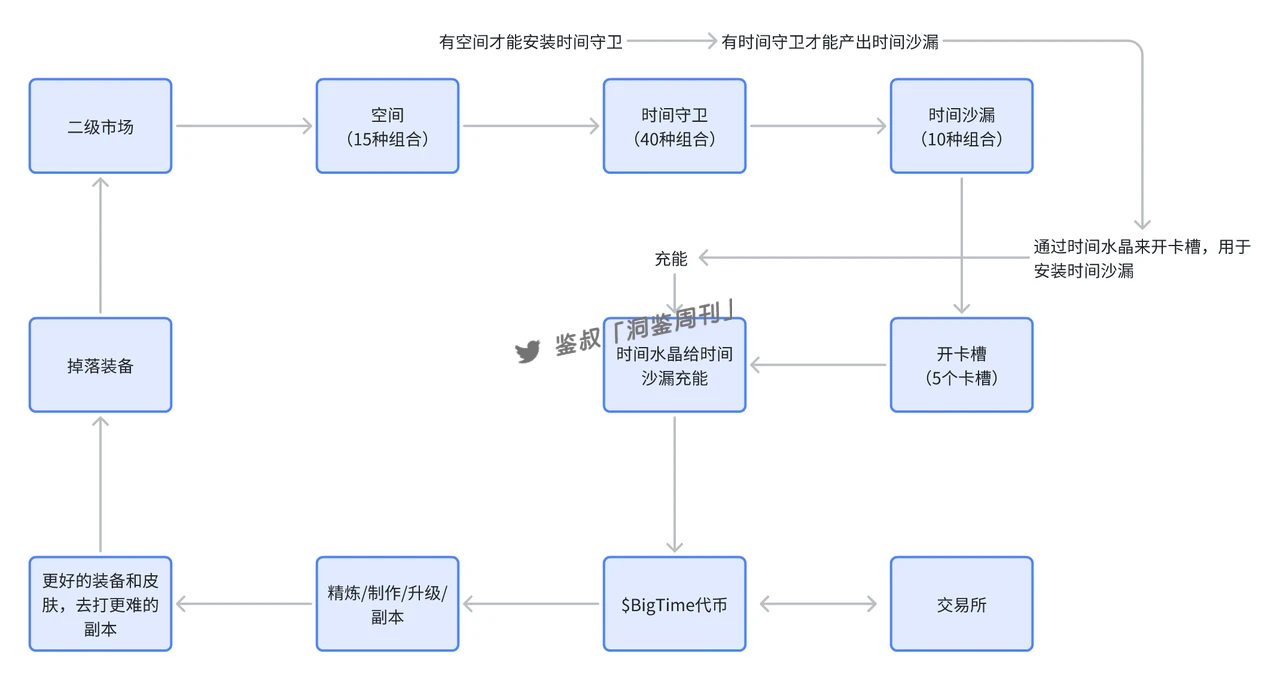
2. Player type balance
BigTime divides players into four main types: ordinary players, gold-making players, landlords, and krypton gold bosses. Among them, gold-making players have different types of branches.
Ordinary players: mainly experience the game content, including zero-cost players, and pay more attention to the playability of the game.
Gold Farming Players: Mainly for profit, earn NFTs and tokens through games and sell them, not caring about playability.
Landlord: Balance the playability of the game and the income from gold farming, and gain income by renting out NFTs.
Big spenders: They value game content and fun, and gain more recognition and emotional value through games.
BigTime achieves a closed loop by adapting the gaming experience of different types of players, so that gold-earning players only focus on earning gold, and krypton gold tycoons only enjoy the game while consuming the output of gold-earning players. Ordinary players act as lubricants for the game, injecting liquidity into the game in disguise to make the game process run smoothly, and landlords can rent equipment to gold-earning players, krypton gold tycoons, and ordinary players to meet the needs of different players. Finally, the game can bring a sense of honor to the tycoons, entertainment to ordinary players, and benefits to gold-earning players.
With the emergence of different gold-farming merchants, the current drawbacks of the game are also quite obvious. For example, there are almost no equipment merchants at present. The reason is that there are not enough real krypton gold bigwigs in the game. Insufficient consumption makes the overall skin economy run slowly and consumes less. Although the official intervention has been made in the guards and hourglasses that are necessary for gold farming, the prices are still high, resulting in a large difference in the prices of various assets. At the same time, the consumption of $BIGTIME tokens (single currency) and crystals (gold standard) is insufficient, and there are not enough application scenarios.
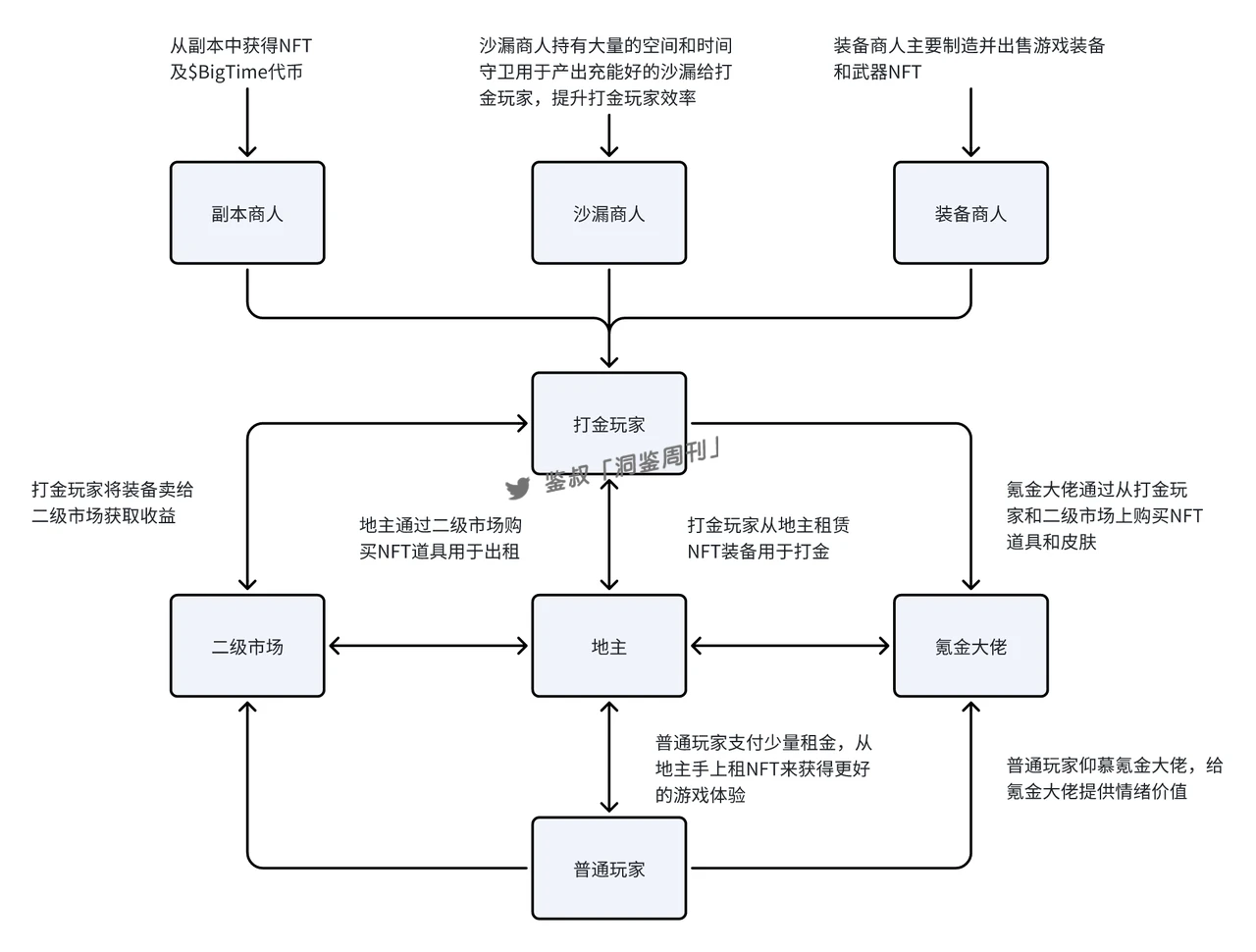
Regarding the balance between gold-farming players and ordinary players, BigTime hopes to maintain 10% of blockchain game (gold-farming) players and 90% of traditional players to ensure the stable development of the game economy. Although BigTime did not directly explain how to control the ratio of gold-farming players and traditional players, from various signs, the number of traditional players is currently seriously insufficient. From the price of goods, it can be seen that the price of the furnace and armory used to generate skin NFTs is very low, while the price of the time guards required for gold-farming remains high. At the same time, the games publicity in the Web2 field is not sufficient, and its publicity model is still the old way of conventional Web3 blockchain games.
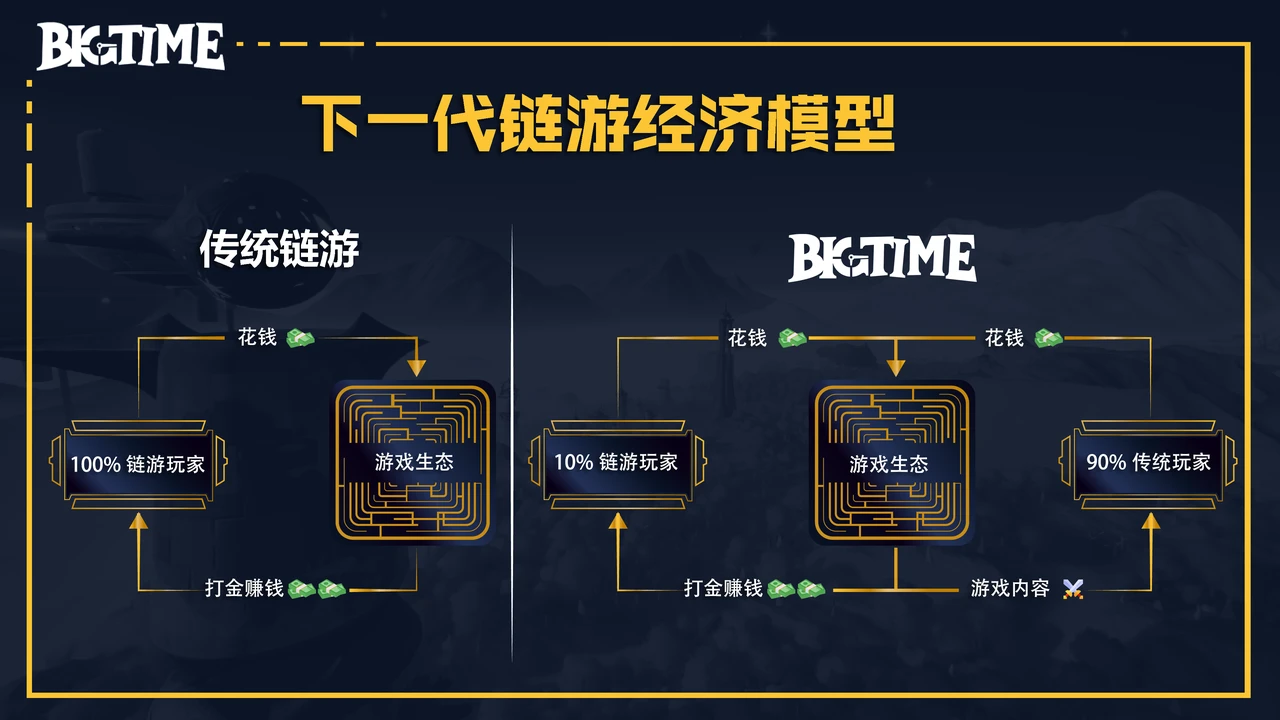
The leasing system is a disguised form of pledge lending, i.e., Difi gameplay. Now many game developers believe that it is better to pledge NFTs than to pledge tokens, which can also reduce market circulation and pledge in disguise. Under the condition of market stability, long-term stable rental income will make players unwilling to sell NFTs and achieve the purpose of locking positions. However, for gold-making players, obtaining weapons and equipment at low prices will further lead to a decline in gold-making income, which needs to be solved through natural market regulation and official intervention.
In summary, the leasing system allows NFT lessors to achieve the purpose of indirect lock-up, but it is extremely dependent on the long-term stability of market prices. If the market cannot stabilize, a death spiral is likely to occur. The figure below illustrates the benefits under ideal conditions.
3. Strong centralized control
Strong centralized control is mainly reflected in the macro-control of the game economy by game developers. Frequent regulation in the short term may disgust many players, but from a long-term perspective it may have positive significance for the game.
At the beginning of the season, the official found that due to the extremely low cost of charging the time hourglass, a large number of time guards were producing time hourglasses, causing the time hourglass to be seriously over-issued in a short period of time. The official intervened in time and increased the cost of charging the hourglass to balance the role of the time guards. However, this incident also led to the emergence of time merchants who were responsible for selling hourglasses. Later, because the time guards were the key functional NFTs for producing $BIGTIME tokens, someone started a monopoly business, and the lowest-level time guards rose tenfold in a short period of time. After the official noticed it, they intervened again to control the NFT price by increasing the airdrop volume and explosion rate. For strong centralized control, transparency is the key. BigTime鈥檚 official statement stated that all $BIGTIME tokens can only be produced through games, and there is no possibility of a huge amount of unlocking.
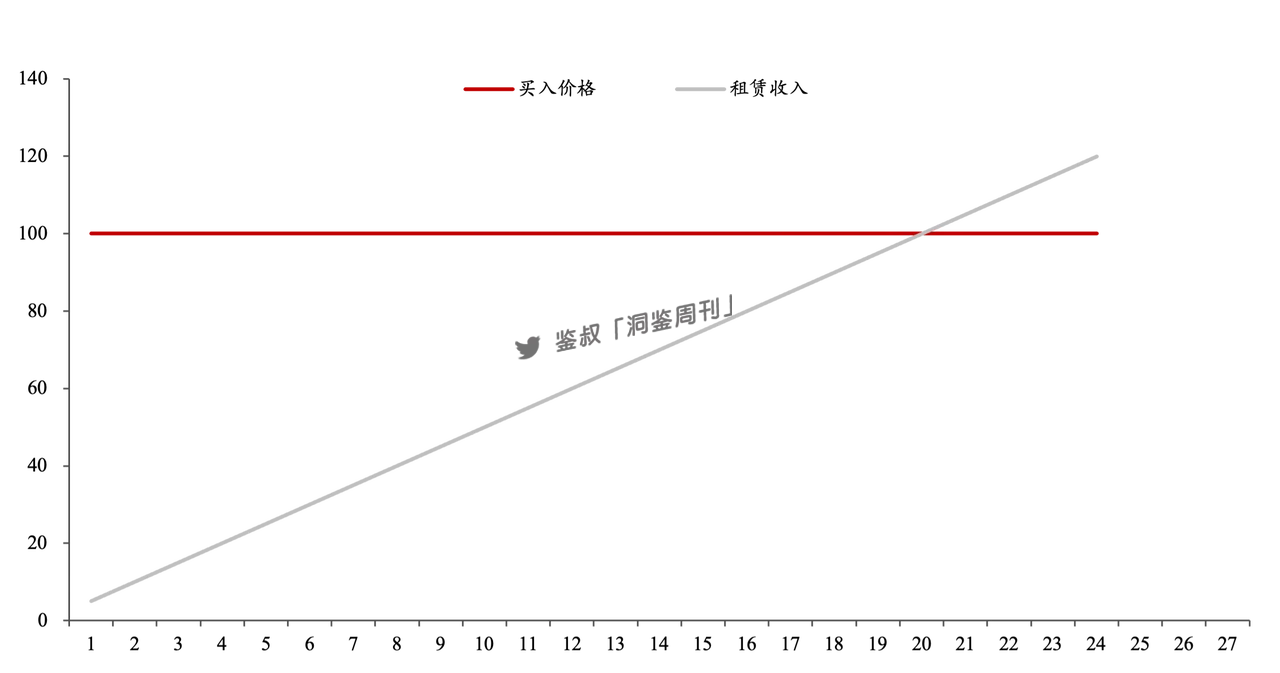
2. Analysis of Big Time Economic Model
skin:
For many traditional Web2 games, players must top up to buy the skins and props they want, which also means that most game skins and props cannot be resold. This operation mode makes it impossible for many players to cash out their props. If they want to sell them, they can only sell their accounts, but their value will depreciate significantly. For game manufacturers, this one-size-fits-all approach also reduces the possibility of inflation to a certain extent.
For BigTime, BigTime is more focused on the development of the skin system, and the overall transaction circulation model is similar to CSGO. Taking CSGO as an example, players pay fiat currency to obtain weapon boxes and keys, and then obtain different levels of game skins through weapon box draws. Game skins can be traded on the over-the-counter platform to complete cashing out. Therefore, a market focusing on CSGO transactions has also been derived, such as NetEase buff.
BigTime mainly produces NFT skins through in-game armory/time guards, etc. The skins produced are limited and will never be increased. At the same time, NFT skins can be freely traded on the chain in the game, and different NFT skins will also allow players to enter exclusive dungeon content, but it does not affect the balance.
 NFT:
NFT:
BigTime can be divided into two types of NFTs, namely skin NFTs and functional NFTs. Skin NFTs are decorations without any bonus and guarantee balance. Their role is to increase user stickiness, ensure the gaming experience of krypton gold bosses and skin merchants, and highlight the status of players. Functional NFTs are production tools, mainly used to maintain the operation of BigTime and produce $BigTime tokens.
Skin NFTs can also be divided into two categories: manufacturable skins and non-manufacturable skins.
-
Manufactureable Skins: Mainly generated through the Armory and Furnace, there are ten rarities, the higher the rarity, the more refined the skin.
-
Non-manufacturable skins: NFTs can only be dropped by killing monsters and dungeons, such as space decorations, weapons, armor, titles, and sound effects, and they also have different rarities. Non-manufacturable skins can be obtained through dungeon drops or purchased on the secondary market.
Space:
Space is BigTimes private virtual land, which can be understood as a home in the game. Space allows players to expand their personal metaverse and install skins. For gold-farming players, the biggest functions are:
1. Space can obtain a broken time hourglass
2. Install functional NFTs such as furnaces, armories, time guards, etc.
It can be understood that for players who want to officially experience the BigTime game and make money, space is a necessity, because only with space can $BIGTIME tokens be generated and profits earned. Spaces are mainly divided into three sizes: small, medium and large. Each size has 5 levels and different supplies. The larger the space, the more functional NFTs can be placed, and more decorations and equipment can be placed. The probability of dropping a broken time hourglass is different for different space levels. The rarer the space, the higher the probability of dropping a broken time hourglass. At the same time, functional NFTs with higher rarity can only be connected to spaces with higher rarity.
Space can be traded on the secondary market and randomly dropped from copies and sand enemies, but the probability is extremely low.
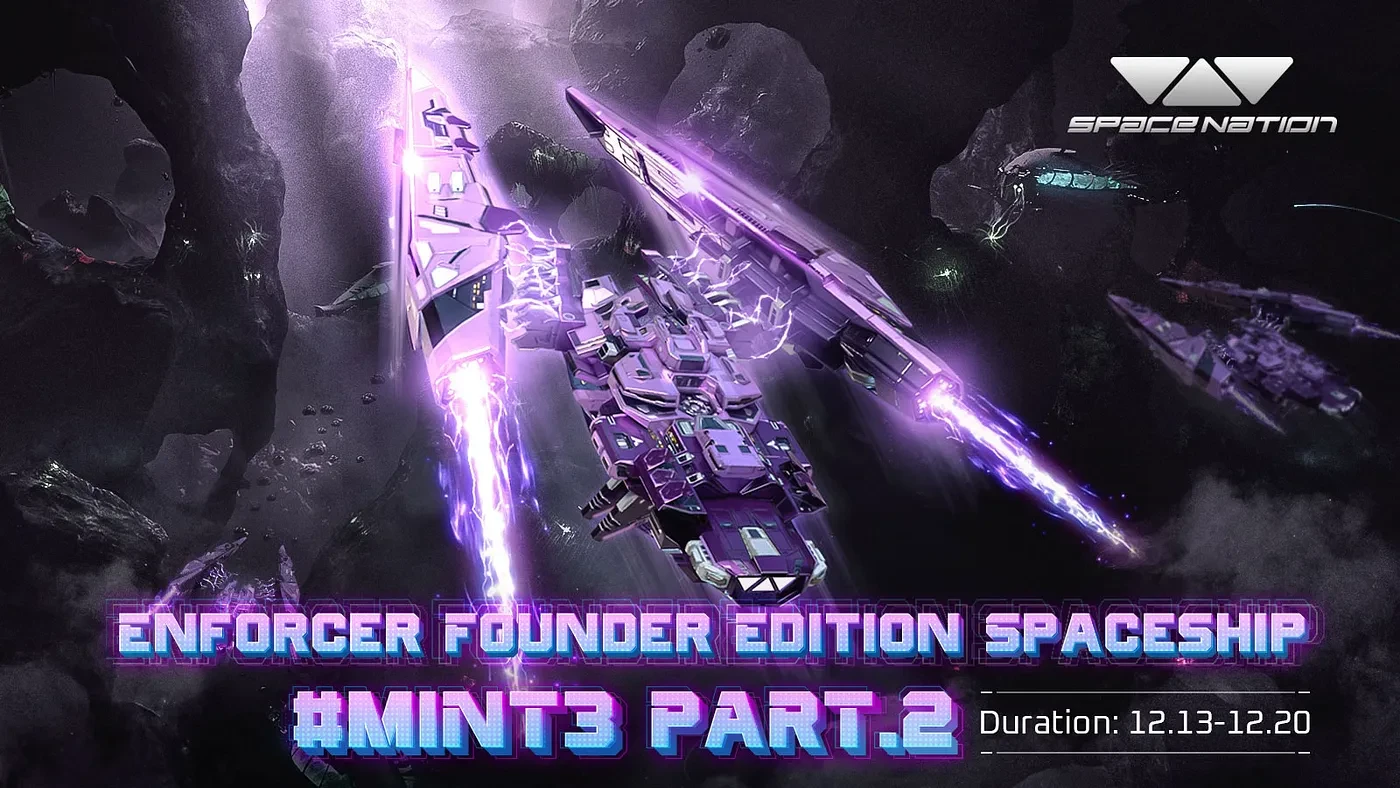
Functional NFTs:
Functional NFTs mainly include the Crucible, Armory and Time Guard. These three functional NFTs are important components of BigTime and are also necessary equipment for gold-farming players. The main function of the Time Guard is to produce $BIGTIME tokens, while the Crucible and Armory consume $BIGTIME tokens to make skin-type NFTs.

Functional NFT 1: Forge
As a functional NFT, the furnace is mainly used to refine NFT weapon skin fragments and make and upgrade weapon skins. There are ten levels of furnaces from ordinary to unparalleled, and different types have different special rewards and colors. There are 10 types of furnaces, sorted from AJ type. Different types of furnaces can add special bonuses to different weapon skins. For example, the red A-type furnace can add special bonuses to the two-handed axe weapon skin, while the rainbow type can add special bonuses to all weapon skins.
A furnace can only manufacture or upgrade weapon skins that are one level lower than its own rarity. We can understand that an ordinary furnace can manufacture and upgrade weapon skins of rare levels, but cannot manufacture weapon skins of rare levels. Furnaces are also divided into red, blue, green, and rainbow. Different colors have different bonuses, such as red for speed bonus, blue for efficiency bonus, green for luck bonus, and rainbow for all bonuses. At the same time, installing different furnaces in one space will also have additional bonuses.
In summary, the composition of the furnace is very complex, we can simplify it again:
There are ten levels of furnaces, ranging from common to unparalleled, with different rarity
There are ten types of furnaces, sorted from A to J, each with special bonuses for different weapon skins.
The furnace has four colors: red, blue, green, and rainbow. Different colors can be combined into sets and combined to get extra bonuses.
In addition, the furnace can be used to manufacture and upgrade weapons by consuming $BIGTIME tokens, and the furnace can be upgraded to obtain better manufacturing capabilities.

Functional NFT 2: Armory
The Armory is mainly used to refine skin fragments and craft and upgrade armor skins. The Forge focuses on weapon skins, while the Armory focuses on armor skins. All the properties and characteristics of the Forge are almost identical to those of the Arsenal.
Compared to the Forge, the Armory has the same settings, mainly:
The Armory has ten levels, ranging from Common to Unparalleled, with different rarity levels.
There are ten types of armor, sorted from A to J, each with special bonuses for different armor skins.
The armory has four colors: red, blue, green, and rainbow. Different colors can be combined into sets and combined to gain additional bonuses.
The Armory can also manufacture and upgrade armor by consuming $BIGTIME tokens, and obtain better manufacturing capabilities by upgrading the Armory.
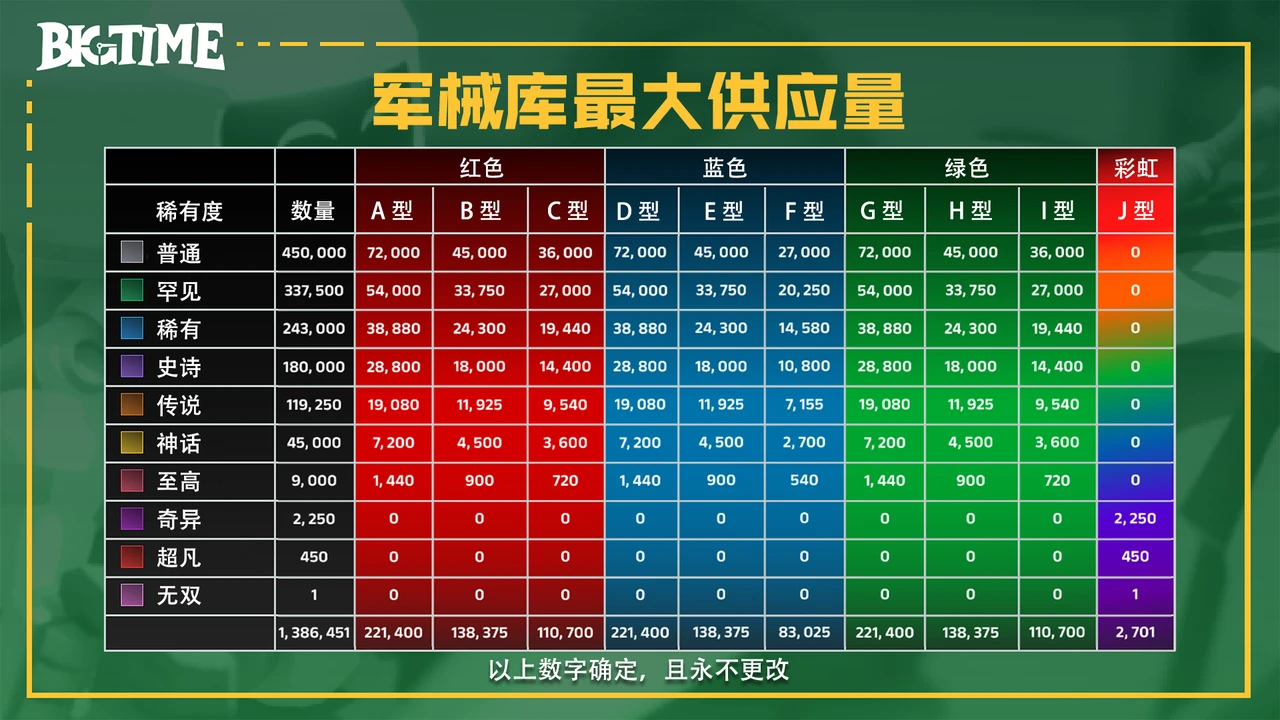
Functional NFT 3: Time Warden
Time Guards are mainly used to make and replenish time hourglasses, which are divided into ordinary hourglasses and broken hourglasses. Unlike furnaces and armories, Time Guards can only make and synthesize NFT props of the same or lower level.
There are ten levels of Time Guardians, ranging from Common to Unparalleled, with different rarity levels.
There are four types of time guards, sorted from A to D, each with a special bonus to the charging and manufacturing time of different hourglasses.
Time Guards come in four colors: red and blue, blue and green, green and red, and rainbow. Different colors can be combined into sets and combined to gain additional bonuses.
Time Guards can be made with Time Crystals. Consuming $BIGTIME tokens and three Time Hourglasses will give you a higher level Time Hourglass. You cannot upgrade across levels. Hourglasses of different rarity require different Time Crystals and times. The higher the rarity, the greater the consumption. Time Guards can also be upgraded through experience points. Upgrading Time Guards can improve efficiency and unlock luck bonuses.
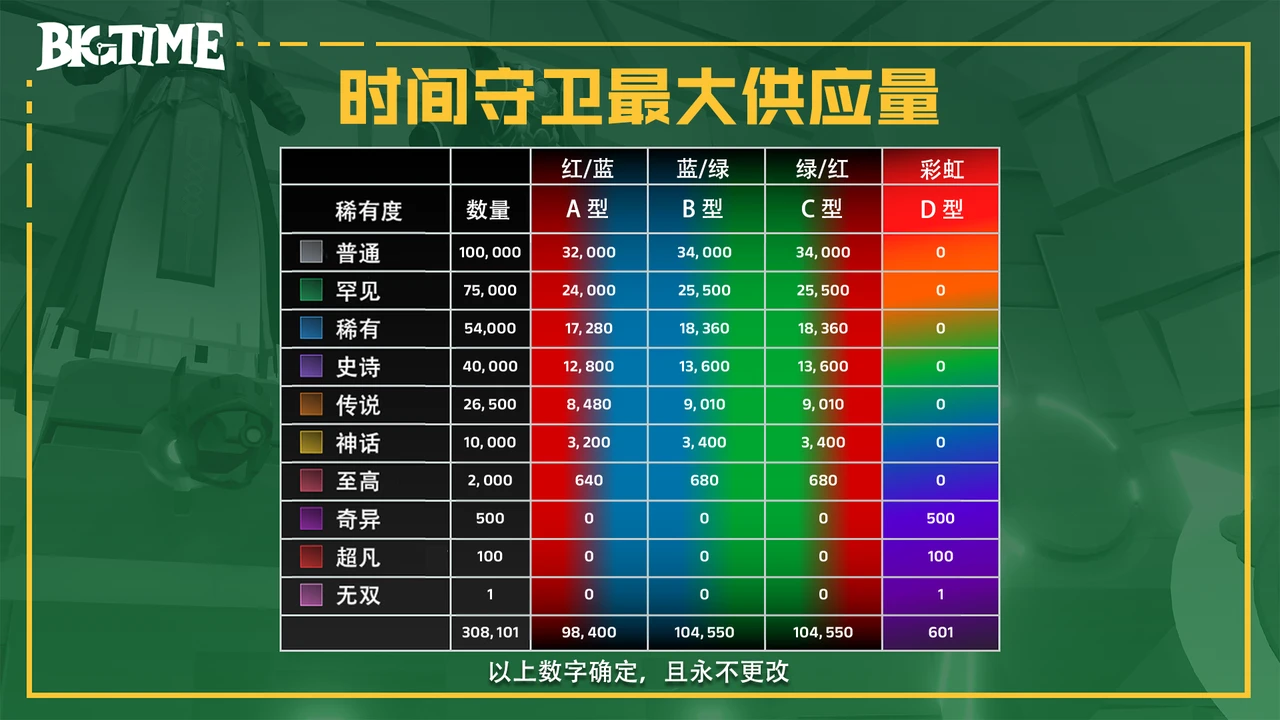
Hourglass
The time hourglass can be made by the time keeper or purchased on the secondary market. Its main function is to obtain $BIGTIME tokens. Players can open up to five card slots to equip 5 time hourglasses to ensure that the time hourglass maximizes the output of $BIGTIME tokens. Players need to use time crystals to open card slots to increase the number of time hourglasses. The more card slots, the higher the cost.
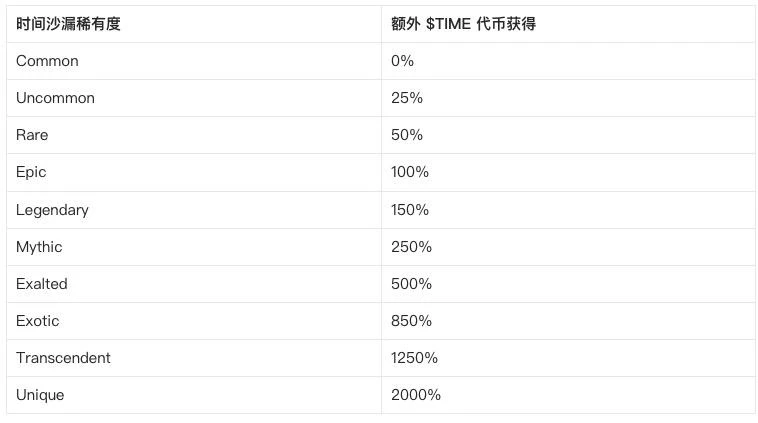
The time hourglass has ten levels, from common to unparalleled, with different rarity. The higher the rarity, the more $BIGTIME tokens it produces. The time hourglass will use up the sand inside over time after being equipped. After it is exhausted, it will no longer produce $BIGTIME tokens and needs to be filled by the time guard using time crystals.
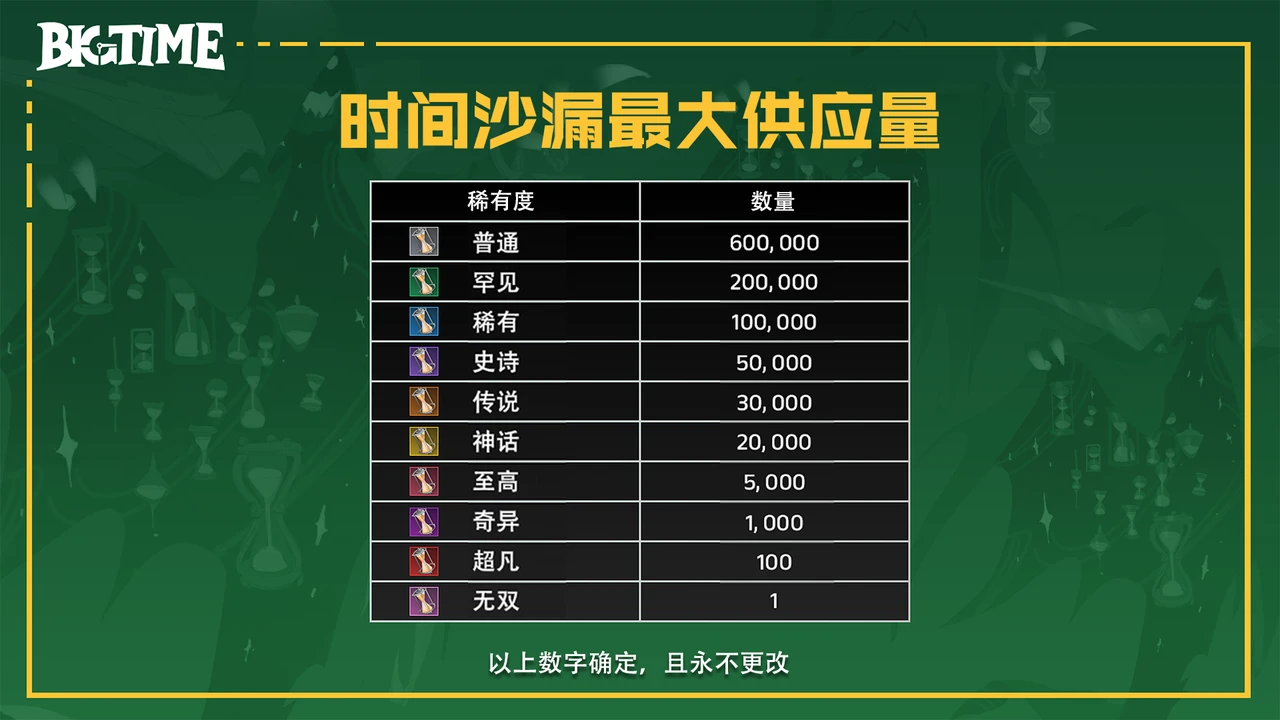
Craked Hourglass
The Broken Hourglass is a consumable item, not an NFT. You can obtain $BIGTIME tokens when you equip it, but it will be automatically destroyed once the sand is exhausted and cannot be traded. The size of the space connection determines the number of Broken Hourglasses dropped, and the rarity of the space also determines the rarity of the Broken Time Hourglass.
Summarize:
Hourglasses can be purchased through the secondary market or crafted by Time Keepers
Broken Hourglass cannot be purchased on the secondary market (not NFT), it is randomly dropped through space
The higher the hourglass rarity, the more $BIGTIME tokens you will receive.
Game resources:
Time Crystals
Time crystals are not cryptocurrencies, but are high-level currencies of BigTime. They can be purchased with fiat currency in the secondary market, or dropped in the game (with a low probability).
Time crystals are mainly used to charge hourglasses.
 $BIGTIME Token
$BIGTIME Token
$BIGTIME tokens are the main cryptocurrency for BigTimes economic development, with a maximum circulation of 5 billion. Players can produce them by equipping time hourglasses and playing dungeons, or by importing them into the game through wallets. The main purpose of $BIGTIME tokens is to refine, manufacture and upgrade NFTs, accelerate the production of functional NFTs, and access advanced dungeons.
How to get $BIGTIME tokens:
You need to buy space through the secondary market and then buy time guards. Time guards can produce time hourglasses. Time hourglasses need time crystals to charge. When the time crystals are charged, they need to be inserted into the card slot to produce $BIGTIME tokens.
Skin Fragments:
Skin fragments can be used as the basic materials for making more advanced resources in the game. They can be obtained through the game and purchased on the secondary market. There are three main types of skin fragments:
Furnace Skin Fragment: Can be refined in the Furnace.
Armory Skin Fragments: Can be refined in the Armory.
Wild Skin Fragments: Refine in a furnace or armory.
Shards follow the seasons, which means new skin shards will be released every season.

Refined Skin Fragments:
Refined fragments are mainly used to manufacture and upgrade skins. Refined skin fragments are also classified by function and season, and there are three levels: T1, T2, and T3. The higher the level, the more it can be used to manufacture and upgrade more advanced furnaces and armories. It can be obtained through the secondary market and random drops in the game.
Lucky Bonus Chip:
Lucky chips are used to increase the players luck in the game and improve the output of specific activities. There are two main types:
Workshop Chip: Used for adding functional NFTs.
Advanced portal chip: used to improve the output of advanced copies.
Luck Boost Chips are not tradable and can only be obtained through specific means, such as purchasing them using Time Crystals or Skin Scrap, or as rare drops in-game.
Skin waste:
Resources obtained from dismantling skins cannot be traded and are mainly used to purchase Luck Bonus Chips. The effect of dismantling and the amount of waste produced are determined by the rarity of the skin.
3. Analysis and Outlook
Disadvantages of current blockchain games:
Back to the initial outlook on blockchain games, why is Play to Earn a false proposition? In the final analysis, the current Web3 games are not fun. Compared with Web2 games, the threshold has become higher and the games are more difficult to play. If you want to have fun, why play them? We believe that the current blockchain game market is still in its early stages. The initial popularity of Axie made people see the possibility of blockchain games, but it seems that everyone has only gotten into the horns of Play to Earn. Perhaps only by jumping out of the vicious circle of Earn can the game develop better.
GameFis tokens need certain application scenarios, but many tokens are useless except for their own games. At the same time, compared with Web2 games, most of the investment in Web2 games is in research and development. Some top games even spend hundreds of millions or billions to create games to make them more fun and more realistic, because for Web2 games, only by making the game well can more users come and the game can survive. On the other hand, most of the investment in Web3 games is in marketing, because for many projects, simply issuing tokens and airdrops can make a lot of money, so why spend money on game development?
Therefore, we cant help but think that the gaming community can be divided into project parties and users. Project parties want to make money by making games, and users also want to make money by playing games, so who do they make money from?
Looking ahead:
We believe that games must give players non-financial/monetary experiences, that is, do not make the earn of the game too heavy, but return to the game itself. Social + fun game experience may be the key to the success of a game, whether it is a Web3 game or a Web2 game. Take StepN as an example. Its success lies in that it has opened up a new way of blockchain games, making people feel that Play to Earn can be played in this way, turning its play into running and sports, and earning adds additional benefits such as health to the pure financial attribute benefits, making the game more interesting and playable.
What is the cool point?
The cool point is the experience of getting pleasure, satisfaction and fun in the game. For example, the feeling of catching a rare fish in Animal Crossing, or the moment of getting a golden skin in CSGO, or the moment of killing the boss after practicing hard for several days in Sekiro, these are all cool points. And it is precisely because of the constant triggering and existence of this cool point design in the game that players like and are obsessed with the game more and more, so that they actively spend money on the game.
The importance of social interaction in gaming:
Looking at the current Web3 games from the perspective of Rate of Kingdoms, in fact, most of the chain games ignore the importance of social interaction among players. Taking Rate of Kingdoms as an example, the most important thing is the social system.
Rate of Land is an SLG game. The key to its success is the social attributes of the game. In the game, if you want to move or attack other peoples territories, the most important thing is to join the alliance and grow gradually through the battles between alliances. In the game, the krypton gold boss has a lot of money and little time, and is mainly responsible for concentrating resources and using strength to confront the front, while ordinary players have less money and more time, and can pave the way for the alliance, so that everyone has their own tasks. It is also the existence of the alliance that makes everyone have a home. In the alliance battle, the leader needs to command everyone to fight, which also requires everyone to communicate, greatly increasing the frequency of interaction in the game. And it is this feeling of the alliance is here, and I am not here when the alliance is not here that makes many people obsessed with the game, and the alliance friendship and brotherhood are quite important. Similar to this model are Fantasy Westward Journey, Peace Elite, Egg Party, etc. These games are bound through social attributes and let players recharge the game willingly.
Finally, a few years is not enough for blockchain games to quickly find solutions and complete what Web2 games have done for decades. From Japan鈥檚 red and white machine to the current PS 5, from GTA 1 to GTA 5, from Pac-Man to Red Dead Redemption 2, the entire market has gone through countless rounds of iteration and development, and the current Web3 games are still in a very early stage. Although the road is bumpy, the future is still bright.
4. BigTime Basic Information
BigTime officially started online testing in April 2022. It is an MMORPG game with a gameplay similar to World of Warcraft + Diablo. Compared with Web3 games, it has more delicate graphics, better gameplay and experience.
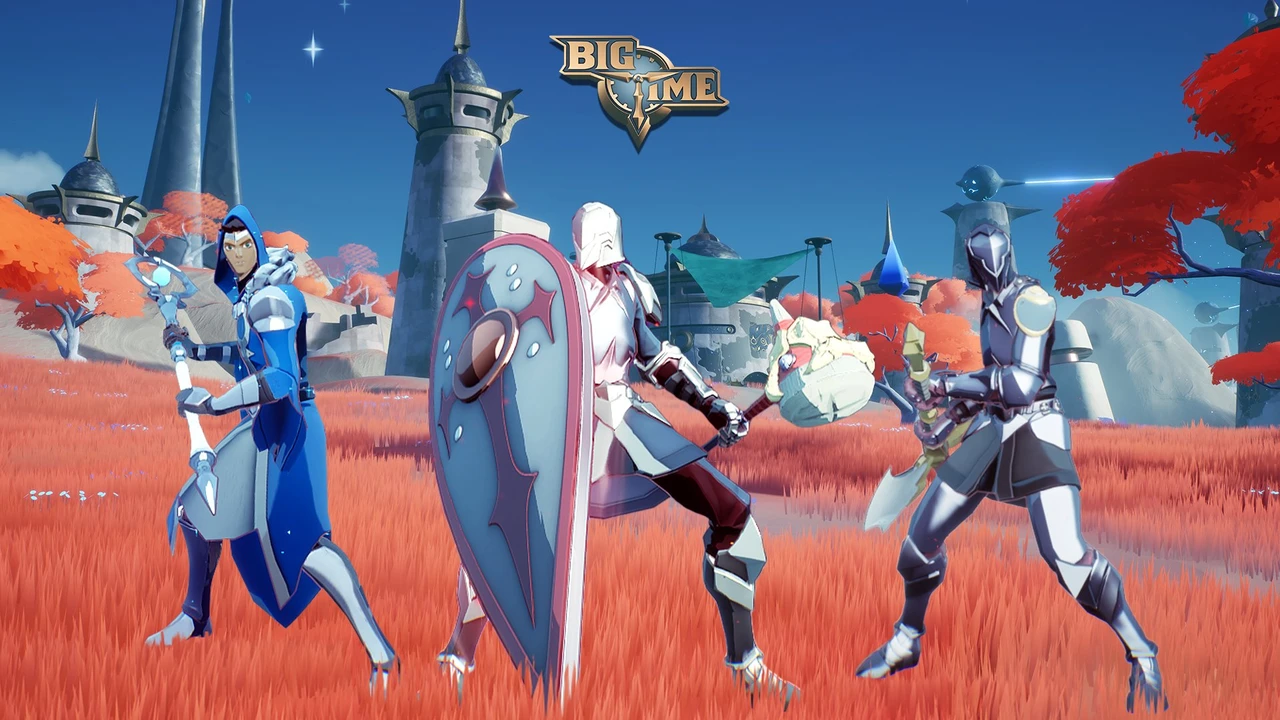
team:
The development team all comes from game production companies such as Fortnite, Call of Duty, and League of Legends, and has rich experience in game production.

Financing:
In May 2021, the game completed a $21 million financing led by FBG Capital. In March 2022, BIgTime completed two NFT sales, and in December completed the third sale, with cumulative revenue of $70 million. Excluding operating costs, the team currently has nearly $90 million to develop the game.
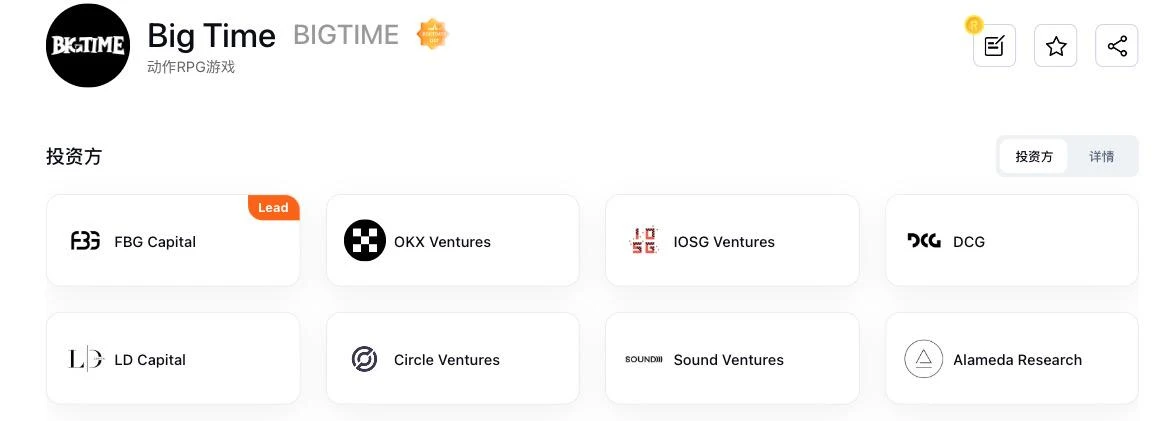
Token:
In October 2023, the game launched a complete economic model and issued $BIGTIME, which rose 5 times in a week, with the highest price approaching 1 US dollar.
Market value: $161 million
Price: 0.1786 USD
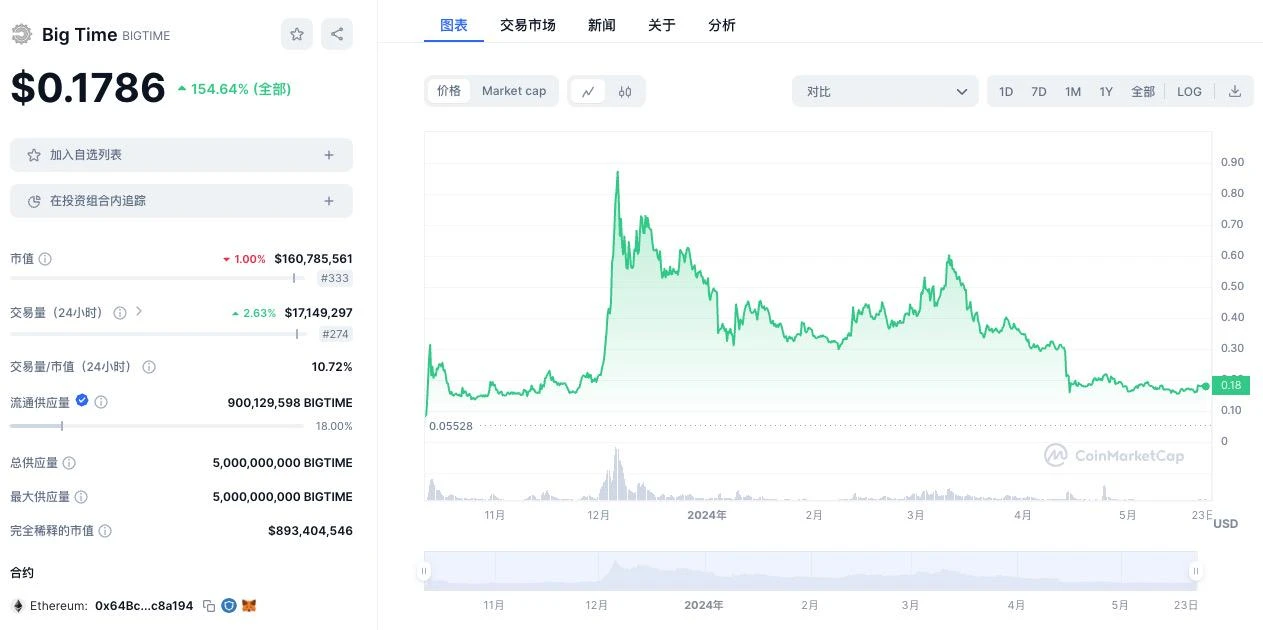
threshold:
From the perspective of game threshold, the game does not have high requirements for computer configuration. An invitation code is required to enter the game, but it is not difficult to obtain.
From the perspective of deposit threshold, the game supports bank card and virtual currency payments, and can be traded on the centralized official website mall, so the threshold is low.
From the login threshold point of view, the game only requires email login, and there is no need to connect to a wallet, which is a good experience for Web2 players to transition.
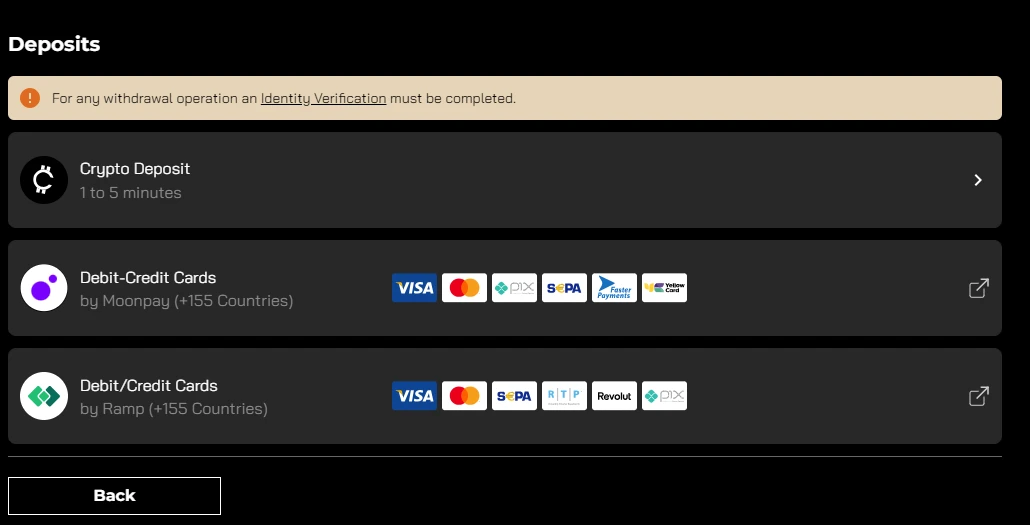
참조:
https://www.chaincatcher.com/article/2103308
https://mirror.xyz/iamwgg.eth/ HAoZR 4 dbEEghw 4 ql 7 fEeaXLeAPGiRronSDjGCpMZC -4
https://zhuanlan.zhihu.com/p/589546502
https://mp.weixin.qq.com/s/_hHSgyBmk 3 TbmX 8 qRcOcHQ
https://wggdao-creators.notion.site/Gamefi- 4 a 00654 d 87 ae 415 fb 7 cfb 564 c 53493 ce
This article is sourced from the internet: Research report: Is BigTime able to survive to this day by relying on nesting dolls?
관련 항목: Polygon의 회복 경로: 투자자 낙관론 속에 MATIC Eyes $1
간단히 말해서 MATIC 가격은 현재 거의 한 달 동안 정체된 하락 추세에서 벗어나려고 시도하고 있습니다. 활성 예금의 감소는 투자자들이 추가 매도를 자제할 준비가 되어 있음을 나타냅니다. 기회 구역의 MVRV 비율은 축적 및 회복 가능성을 더욱 입증합니다. Polygon(MATIC) 가격은 약세를 보인 후 차트에서 상승하여 알트코인이 $1 아래로 떨어졌습니다. 그러나 $1을 지지선으로 되돌리려면 알트코인이 몇 가지 저항을 넘어야 합니다. 폴리곤 투자자들이 낙관적으로 변하고 있나요? MATIC 가격은 역사적으로 투자자의 행동에 따라 톤의 변화를 보여왔습니다. 현재 알트코인이 지속적인 하락세를 돌파하려고 시도하고 있는 상황에서, 투자자의 낙관은 알트코인에 도움이 될 것입니다. 이것…







